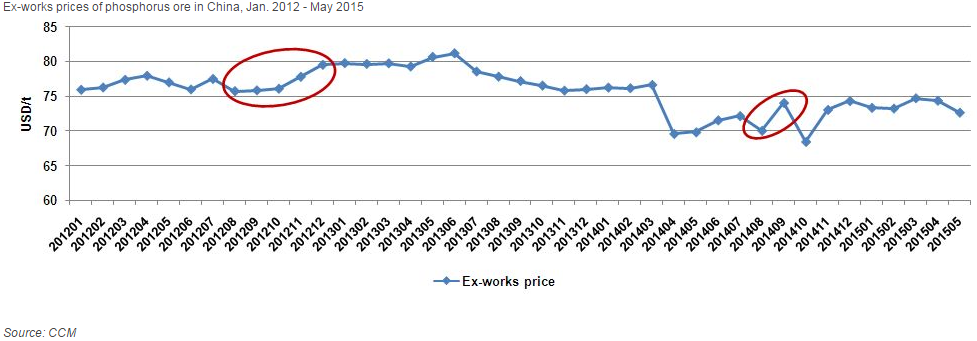
Businesses
across Asia are bracing themselves for the impact of ‘super El Niño,’ but the
phosphate fertilizer industry has more reason to fear than most. Here are three
side-effects of El Niño that the fertilizer industry needs to be prepared for…
2015 is set to be a ‘super El Niño’ year. Ocean
surface temperatures near the equator were already 1.4°C higher than normal in
May, according to China’s National Climate Center, leading to South China being
drenched by 50% more rainfall than normal that month.
And the US National Oceanic Atmospheric Administration
predicts that there is a more than 85% chance that this year’s El Niño will
continue through winter, when its effects tend to be more severe.
The dramatic climatic changes that come with El Niño
have the potential to damage business in many different industries, but the
phosphate fertilizer market is likely to be hit harder than most. If the
phosphate fertilizer industry wants to ride out the storm, it needs to be
prepared to deal with this triple-whammy of side-effects:
1. Phosphate
fertilizers will become much less effective in many areas
El Niño years tend to bring extremes of precipitation.
During the last ‘super El Niño’ in 1997, for example, China’s Yangtze River
Basin experienced the worst flooding since 1954, while North China suffered the
driest year in half a century.
Both heavy rainfall and droughts will severely affect phosphate
fertilizer sales. Not only will farmers will use less fertilizer during dry
spells, but they will be more likely to switch to specialized ‘anti-drought’
compound fertilizers. Water-soluble fertilizers, for example, are much more
effective than traditional fertilizers during droughts. Heavy rainfall also greatly increases the
risk of leaching.
2.
Farmers’
finances will be disrupted
The extreme weather will also take its toll on yields.
The 1997 El Niño had a devastating effect on harvests across Asia, with China’s
corn output down 18% on the previous year, Australia’s wheat yields falling
15%, and palm oil harvests in Indonesia and Malaysia 7% and 5% lower than the
previous year respectively.
A decrease in yields will be detrimental to farmers’
incomes anywhere, but any drop will be much more keenly felt in Asia, where 87%
of the world’s family farms under two hectares are located, according to the
Asia Farmers’ Association. For many of these small, low-income farmers, a
decrease in yields will stretch their finances to the point where many will not
be willing to spend so much on fertilizer. This will have a knock-on effect on
sales of all fertilizers, including phosphate fertilizers.
3. Phosphorus
ore prices will rise
Not only will fertilizer companies experience a dip in
sales, but many are also likely to be hit by rising raw materials costs.
China, where a large proportion of the world’s
phosphorus reserves are located, will suffer widespread drought this year due
to El Niño, and this will hinder the extraction and transportation of
phosphorus ore, pushing up prices.
Droughts have sparked increases in phosphorus ore
prices in China twice in just the last three years: once in 2012 after a
drought in Yunnan Province, and another time in August 2014 when drought struck
many different regions across the country. But this time the droughts, and the
price rises, could be much more serious.

If you
would like to find out more about how El Niño will affect your business, please
get in touch by emailing econtact@cnchemicals.com.
For more
information about CCM and our coverage of China’s fertilizers market, visit www.cnchemicals.com or get in touch directly by LinkedIn, phone or email.
-
Average:5
-
Reads(4686)
-
Permalink


 Back to Cnchemicals.com
Back to Cnchemicals.com 